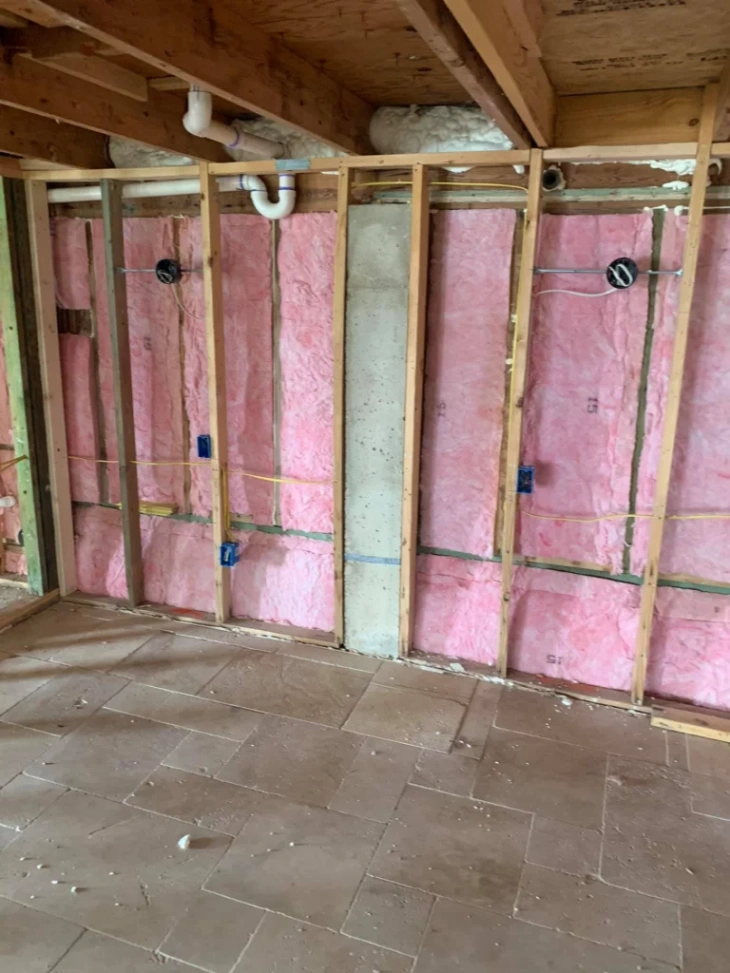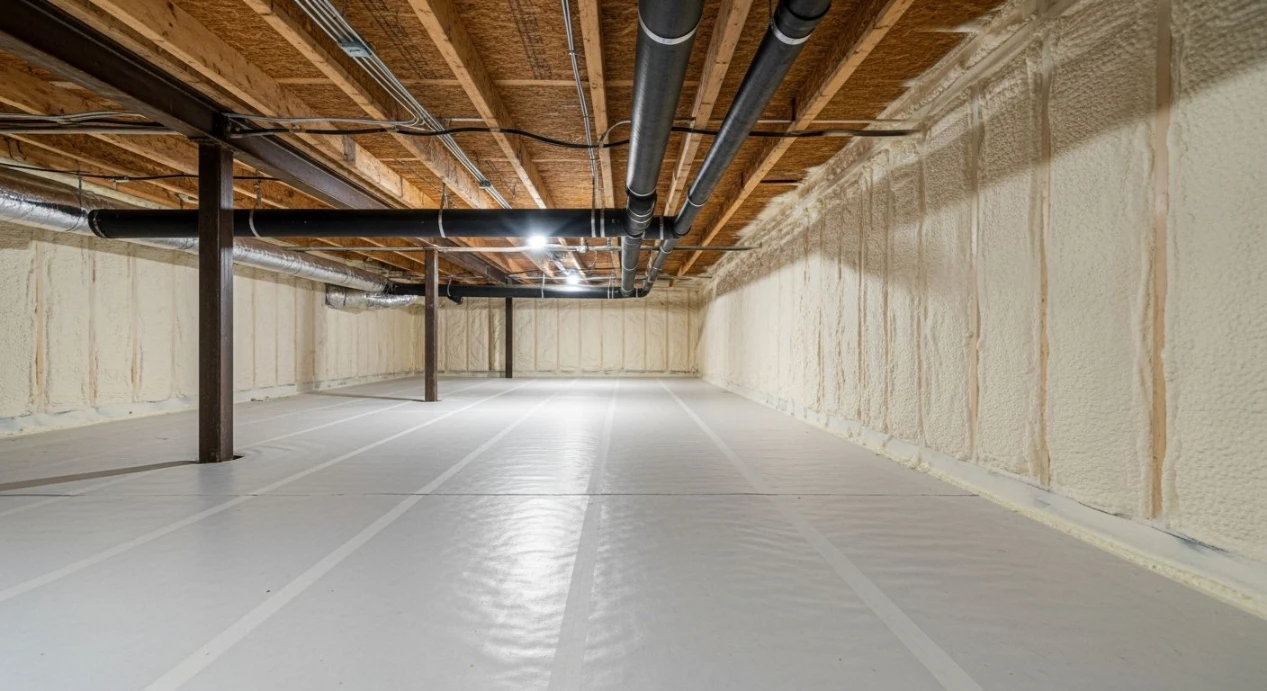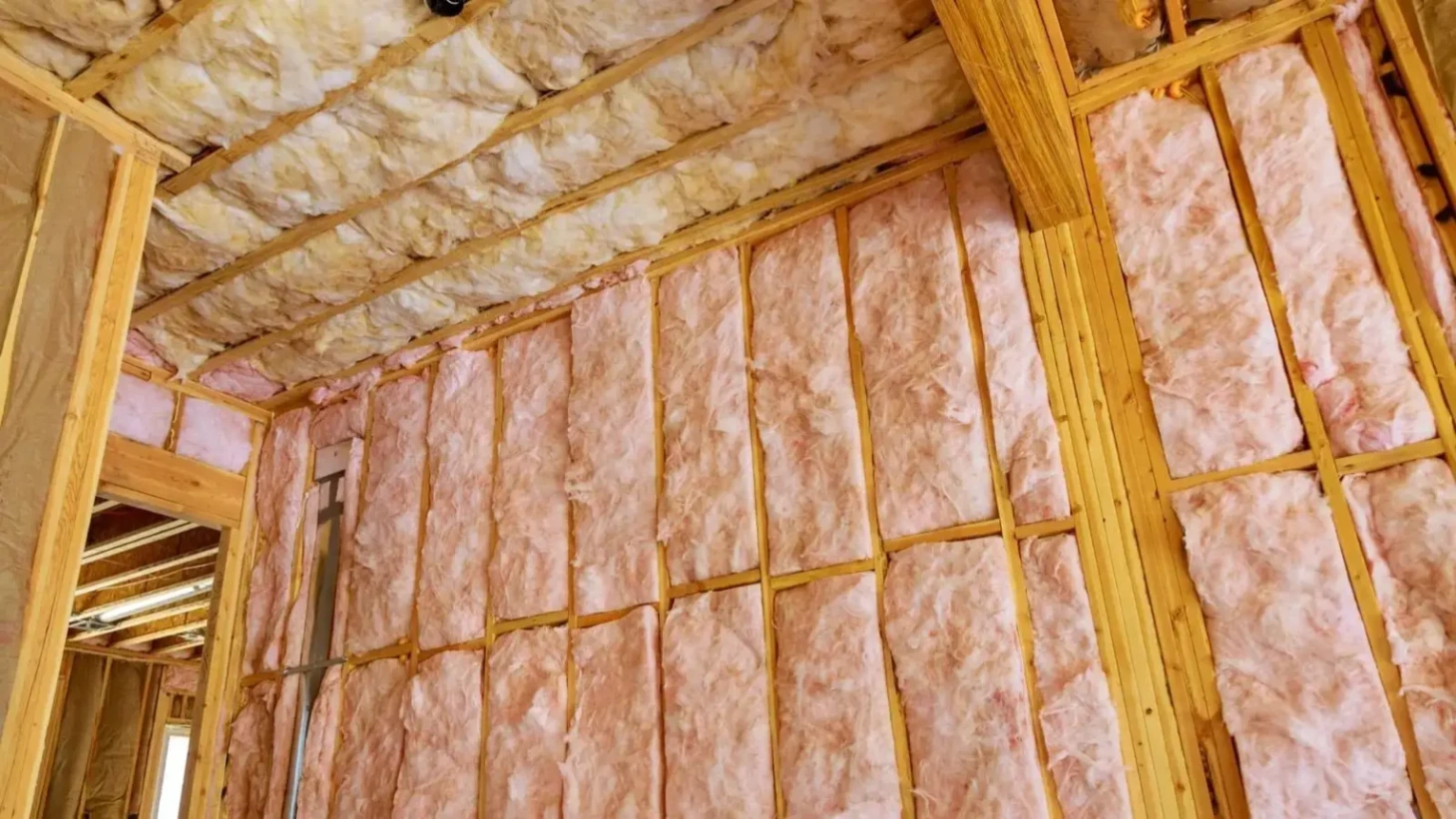
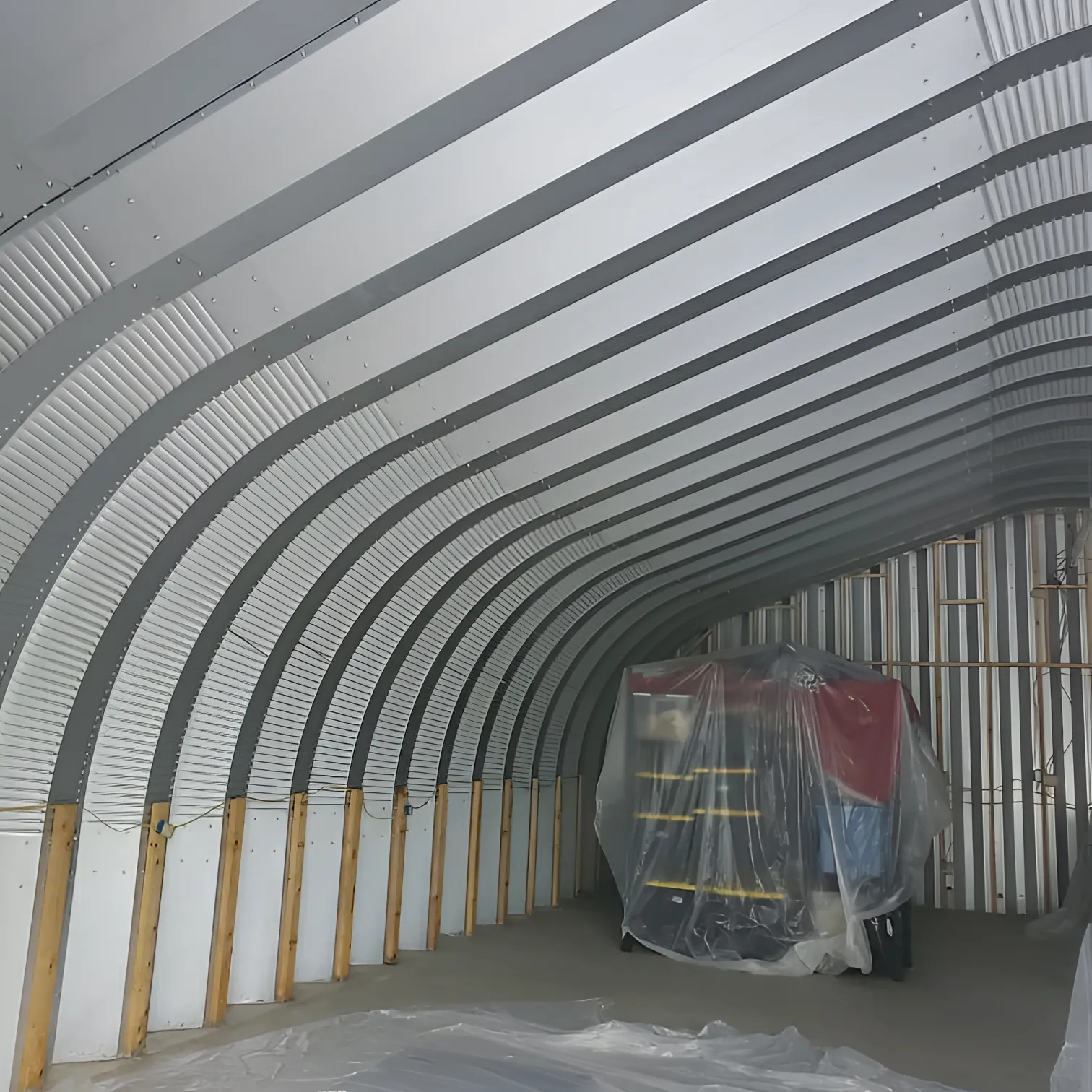
For efficient pole barn insulation in Round Rock, TX, you need R-values between R-13 to R-30 for walls and R-30 to R-60 for roofs, depending on your specific use and climate requirements. The hot, humid Texas climate demands insulation that prevents heat transfer while managing moisture effectively. Closed-cell spray foam typically provides R-6 to R-7 per inch, making it ideal for achieving these values in limited space, while open-cell foam offers R-3.5 to R-4 per inch with superior sound dampening.
Understanding R-values becomes crucial when balancing energy efficiency, moisture control, and structural considerations specific to Central Texas conditions. This comprehensive guide delivers practical insights based on extensive field experience with pole barn insulation projects across the Round Rock region.
R-value measures thermal resistance – the material’s ability to resist heat flow. In Round Rock’s Zone 2A climate, characterized by hot summers and mild winters, proper R-values prevent excessive heat gain during scorching summer months while maintaining comfortable interior temperatures.
| Building Component | Recommended R-Value Range | Primary Function | Climate Consideration |
|---|---|---|---|
| Exterior Walls | R-13 to R-19 | Heat gain prevention | Hot summer protection |
| Roof/Ceiling | R-30 to R-60 | Solar heat reduction | Direct sun exposure |
| Foundation/Slab Edge | R-5 to R-10 | Ground moisture control | Texas clay soil conditions |
| Interior Partitions | R-11 to R-15 | Sound control | Equipment/livestock noise |
The Texas climate creates unique challenges requiring strategic R-value selection. High humidity levels demand vapor-permeable insulation systems, while intense solar radiation necessitates higher roof R-values than traditional residential applications.
Different insulation materials deliver varying R-values per inch, affecting both performance and installation requirements in pole barn applications.
| Insulation Type | R-Value per Inch | Moisture Resistance | Air Sealing Capability | Best Application |
|---|---|---|---|---|
| Closed-Cell Spray Foam | R-6 to R-7 | Excellent | Superior | Walls, roofs, rim joists |
| Open-Cell Spray Foam | R-3.5 to R-4 | Good (with vapor barrier) | Excellent | Interior walls, soundproofing |
| Blown-In Fiberglass | R-2.2 to R-4 | Poor | Minimal | Attic spaces, retrofits |
| Fiberglass Batts | R-3.1 to R-3.8 | Poor | None | Between framing members |
Bonus Tip: Closed-cell spray foam serves dual purposes in pole barns – achieving required R-values while creating an effective air barrier that prevents humid Texas air infiltration.
According to the Department of Energy, buildings in Climate Zone 2A can reduce cooling costs by up to 30% when proper R-values are maintained with continuous insulation systems.
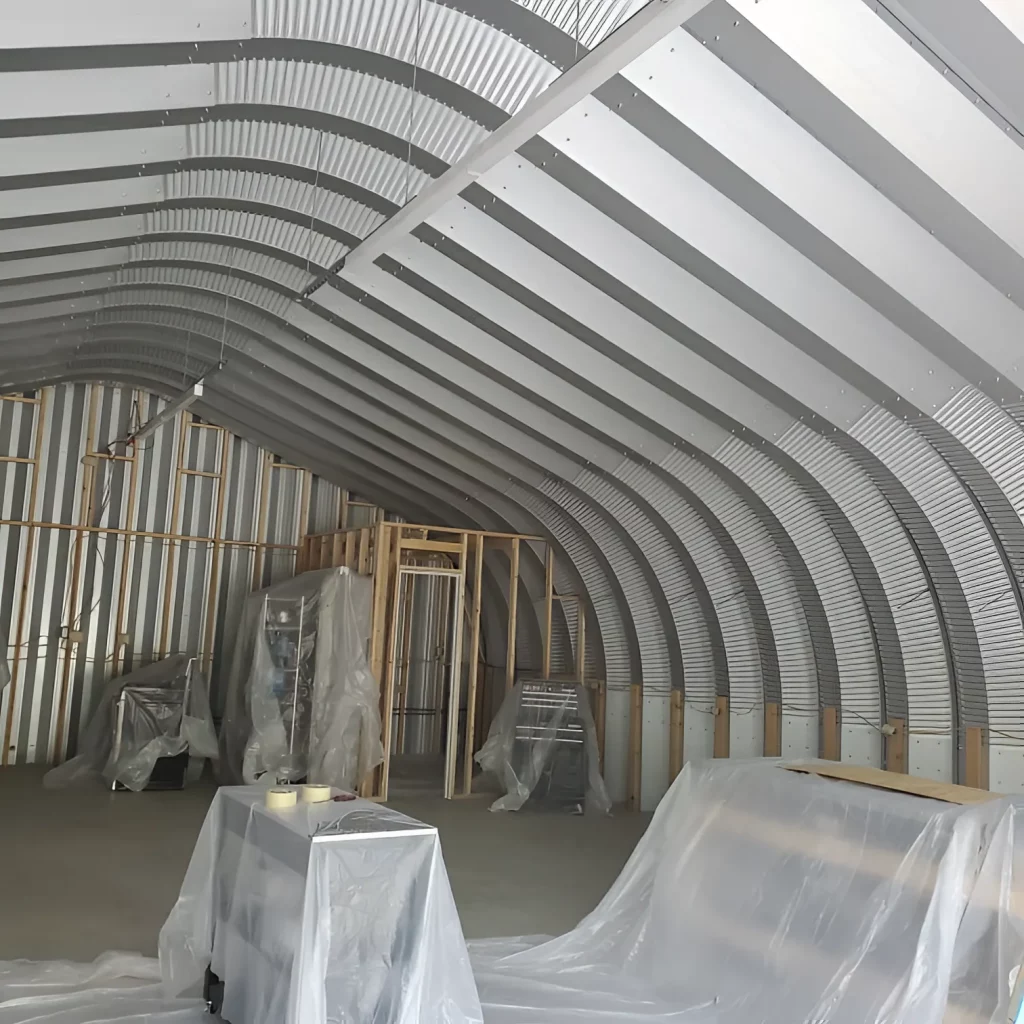
Determining actual insulation thickness requires dividing target R-value by material’s R-value per inch. This calculation becomes critical in pole barns where framing depth limits insulation options.
For achieving R-19 walls using different materials:
Bonus Tip: Consider thermal bridging through metal framing when calculating effective R-values. Steel framing can reduce overall thermal performance by 15-25% compared to wood framing.
Round Rock‘s specific climate conditions influence optimal R-value requirements beyond standard building codes. Summer temperatures frequently exceed 100°F with humidity levels above 70%, creating substantial cooling loads.
The Urban Heat Island effect in Central Texas adds 2-5°F to ambient temperatures, requiring higher R-values for buildings near developed areas. Additionally, frequent temperature swings between day and night create thermal cycling stress on insulation systems.
Research from Texas A&M University indicates that buildings with R-30 roof insulation in Central Texas consume 18% less energy for cooling compared to those with R-19 insulation during peak summer months.
Intended use significantly impacts R-value requirements. Livestock housing demands different thermal performance than equipment storage or workshop spaces. Heated buildings require higher R-values to prevent condensation issues during rare cold snaps.
Moisture management becomes paramount in Texas humidity. Higher R-values without proper vapor control can trap moisture within building assemblies, leading to structural damage and mold growth.
Budget constraints often limit R-value selection, but consider long-term energy savings. Higher initial investment in superior R-values typically pays back through reduced cooling costs within 3-5 years in Texas climate conditions.
Building orientation affects R-value needs. South and west-facing walls receive intense solar exposure, potentially requiring higher R-values than north-facing surfaces.
Bonus Tip: Install continuous insulation where possible to eliminate thermal bridging. Even small gaps in coverage can reduce overall thermal performance by 20-40%.
H & R Spray Foam Insulation specializes in pole barn insulation systems designed for Central Texas conditions. The company’s experience with regional climate challenges ensures optimal R-value selection and installation techniques.
Higher R-values improve thermal performance, but diminishing returns occur beyond R-60 for roofs in Central Texas climate. Focus on continuous coverage and proper air sealing rather than excessive R-values for optimal efficiency.
Steel framing creates thermal bridges that reduce overall insulation effectiveness by 15-25% compared to wood framing. Continuous insulation systems help minimize this heat transfer through metal structural elements.
Livestock housing requires R-13 to R-19 walls for animal comfort and moisture control. Equipment storage needs only R-11 to R-15 walls unless temperature-sensitive items demand climate control.
Closed-cell spray foam at higher R-values eliminates separate vapor barrier needs through its inherent moisture resistance. Other insulation types require careful vapor management to prevent condensation within wall assemblies.
Retrofit applications often achieve R-13 to R-19 walls using blown-in or spray foam techniques. Structural limitations may require creative solutions like exterior continuous insulation for higher R-value targets.
Selecting appropriate R-values for your Round Rock pole barn insulation requires balancing thermal performance, moisture management, and economic considerations. Focus on continuous insulation systems that eliminate thermal bridging while managing Texas humidity effectively.
Consider your building’s specific use, orientation, and long-term goals when determining target R-values. Professional evaluation ensures optimal system selection based on actual field conditions rather than theoretical calculations.
Contact H & R Spray Foam Insulation at (979) 325-2419 or [email protected] for expert assessment of your pole barn insulation needs. The company’s regional experience with Central Texas climate conditions ensures appropriate R-value recommendations and professional installation that delivers lasting thermal performance.
Texas temperature swings create expansion and contraction cycles that can compromise rigid insulation systems within 5-7 years. Spray foam insulation maintains flexibility and adhesion through these cycles, preserving R-value performance longer than traditional batt systems.
Inspect for air leaks annually around doors, windows, and penetrations where humid air infiltration reduces insulation performance. Check for moisture stains or mold growth indicating vapor control issues that compromise thermal resistance over time.
Each inch of spray foam adds approximately 2-4 pounds per square foot to roof loading depending on density. Calculate cumulative weight when achieving R-30 to R-60 values to ensure structural adequacy for snow and wind loads.
Adding exterior continuous insulation over existing systems increases overall R-values without disturbing interior installations. This approach works effectively for achieving higher thermal performance standards during roof replacement projects.
Thermal imaging identifies gaps or compression areas where R-values fall below design specifications. Address air leakage points and ensure proper vapor control installation to restore intended thermal performance levels.

